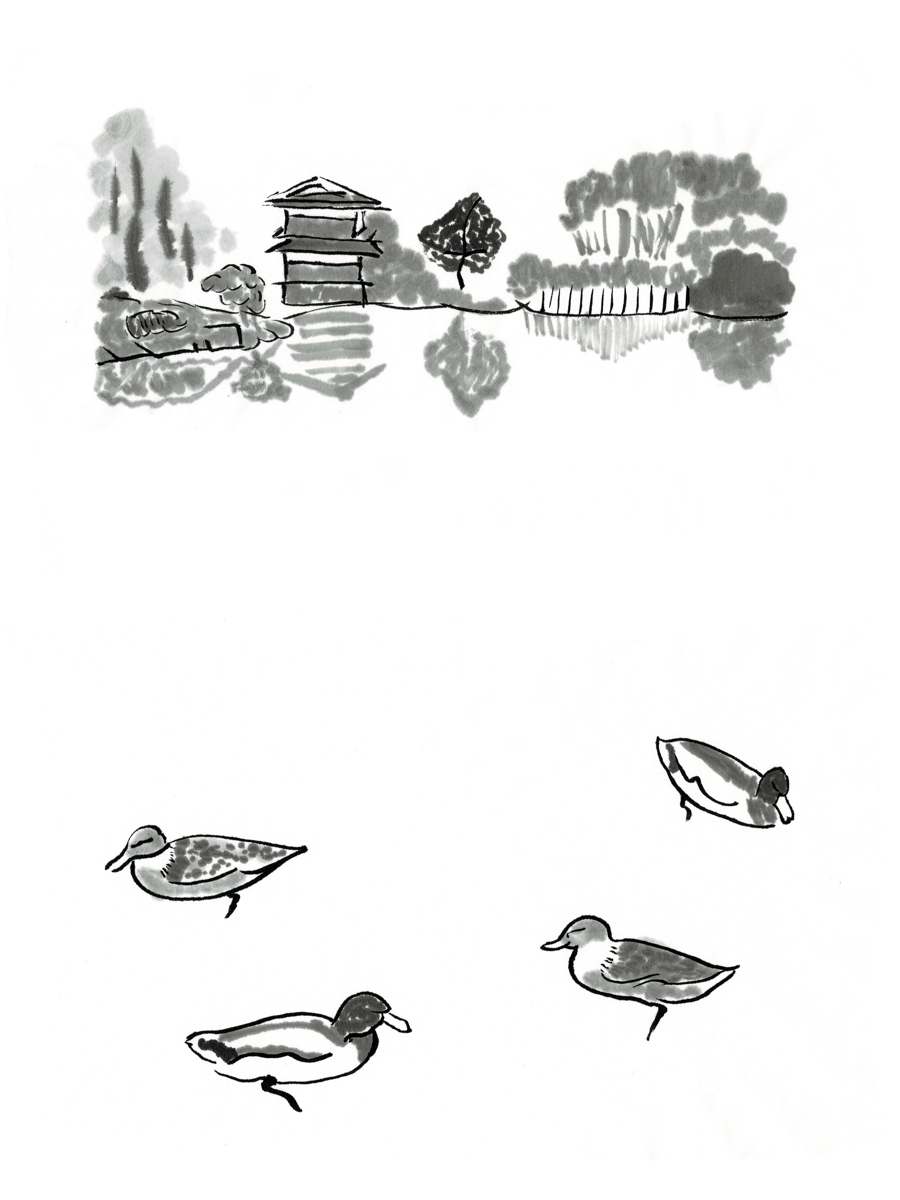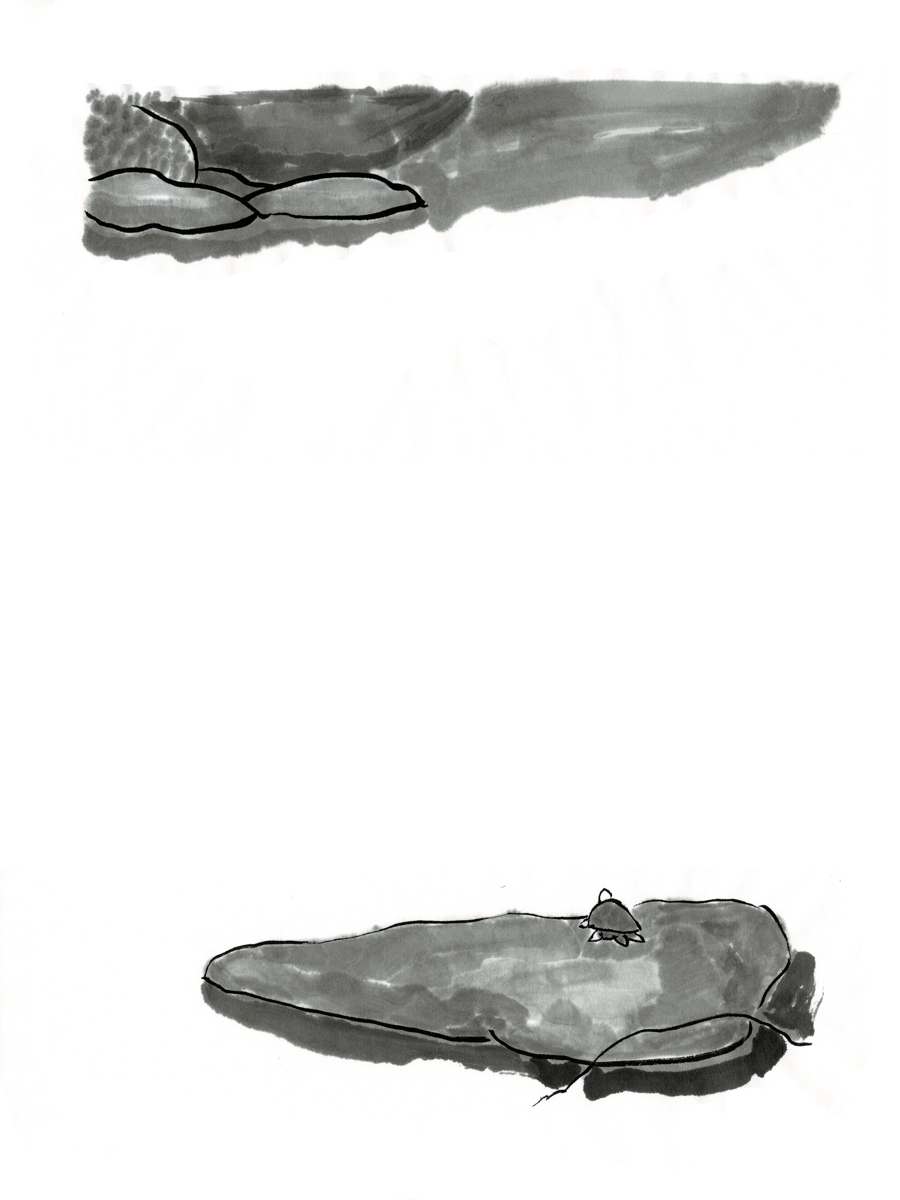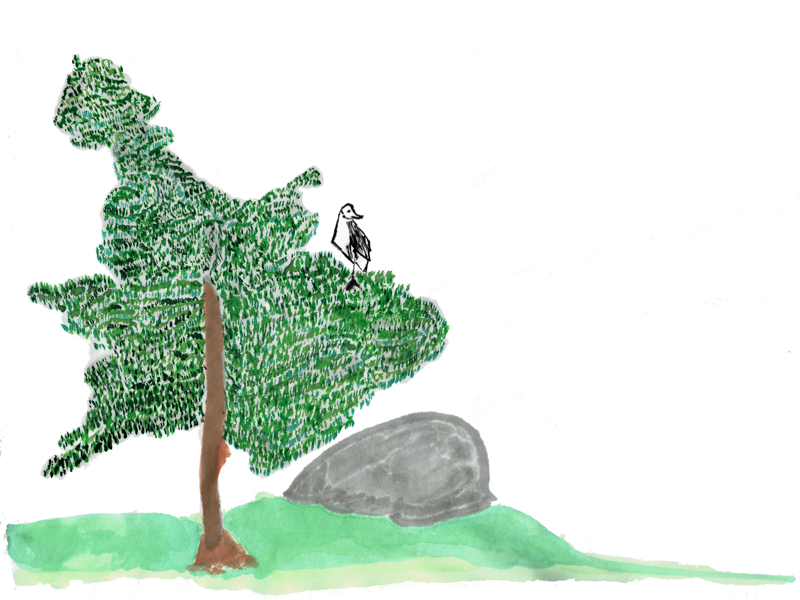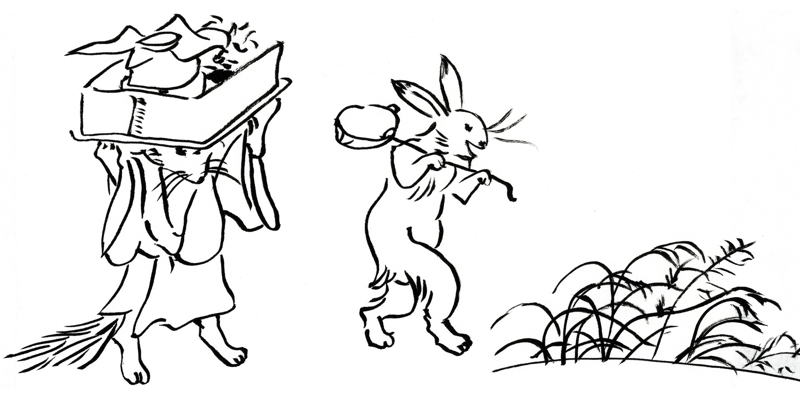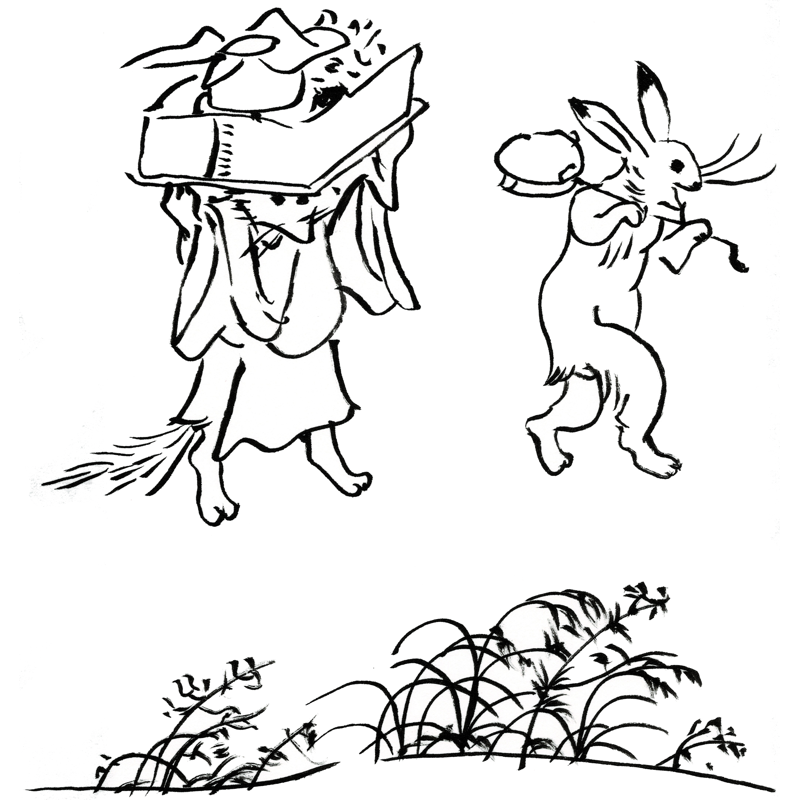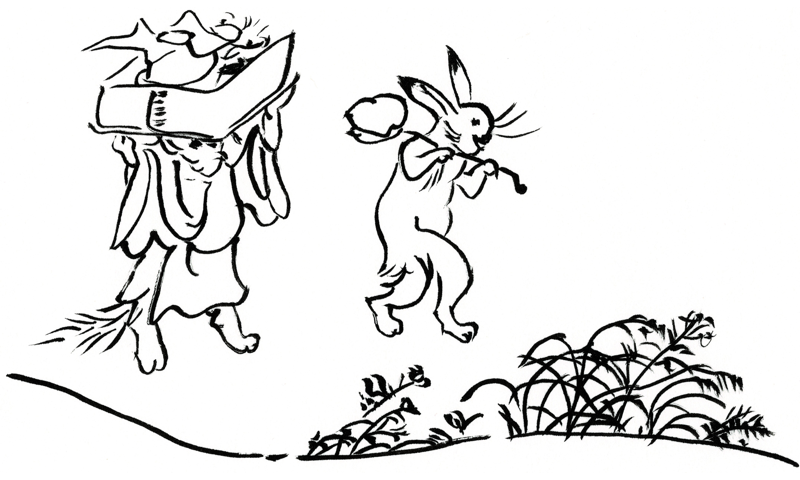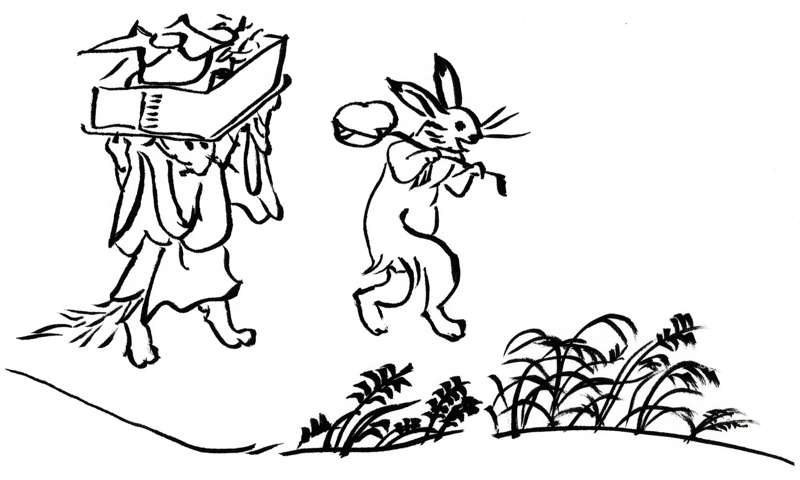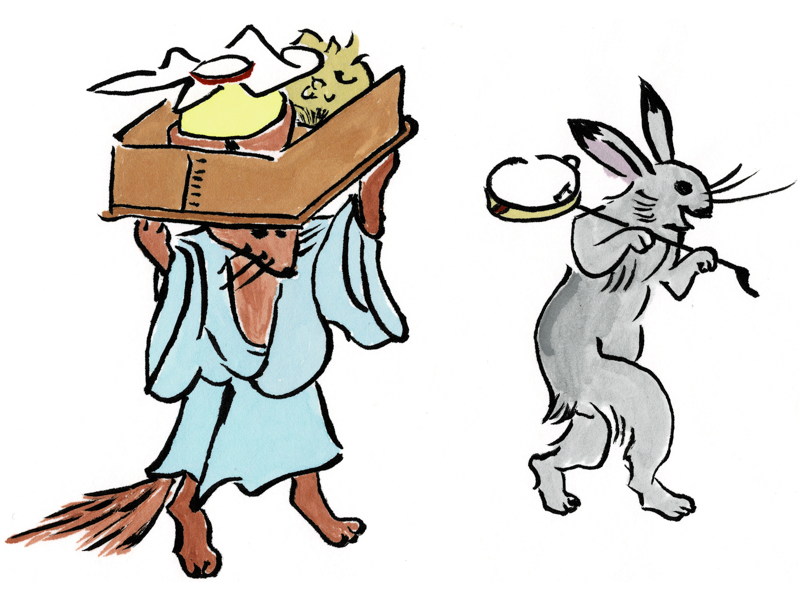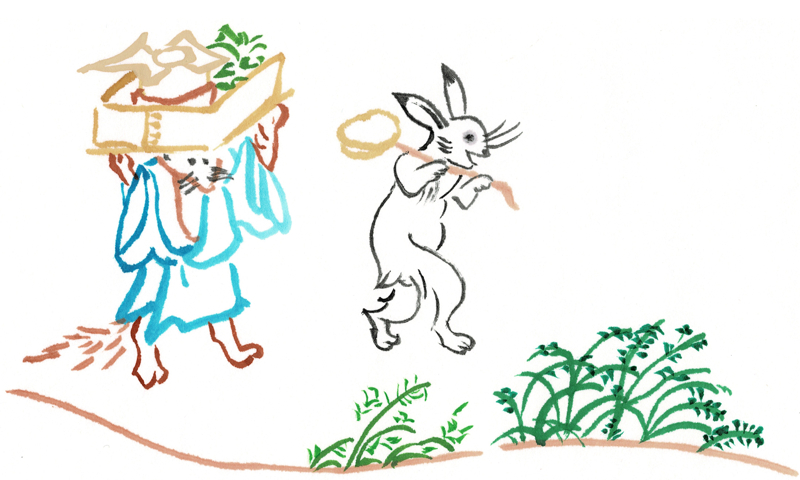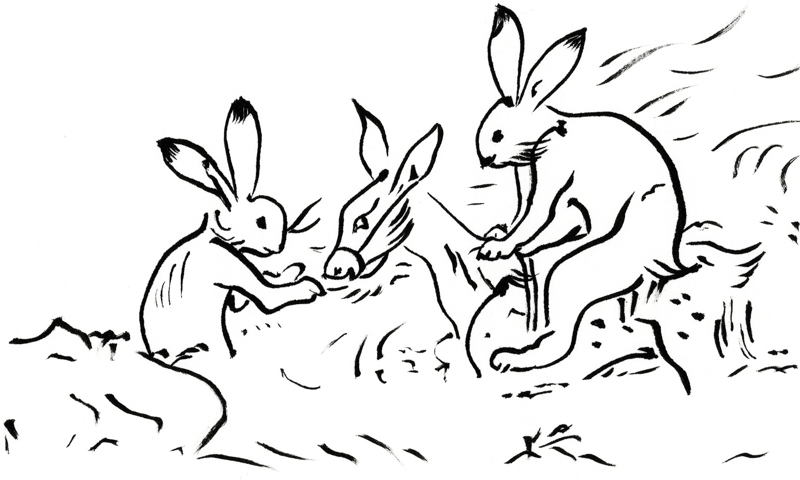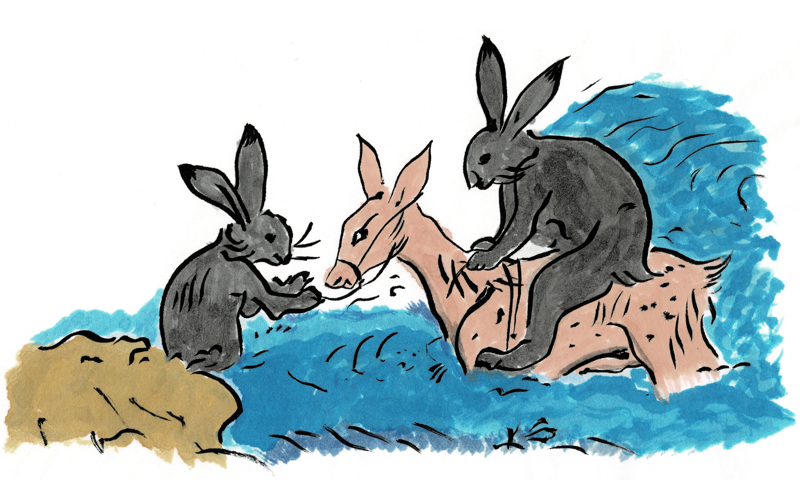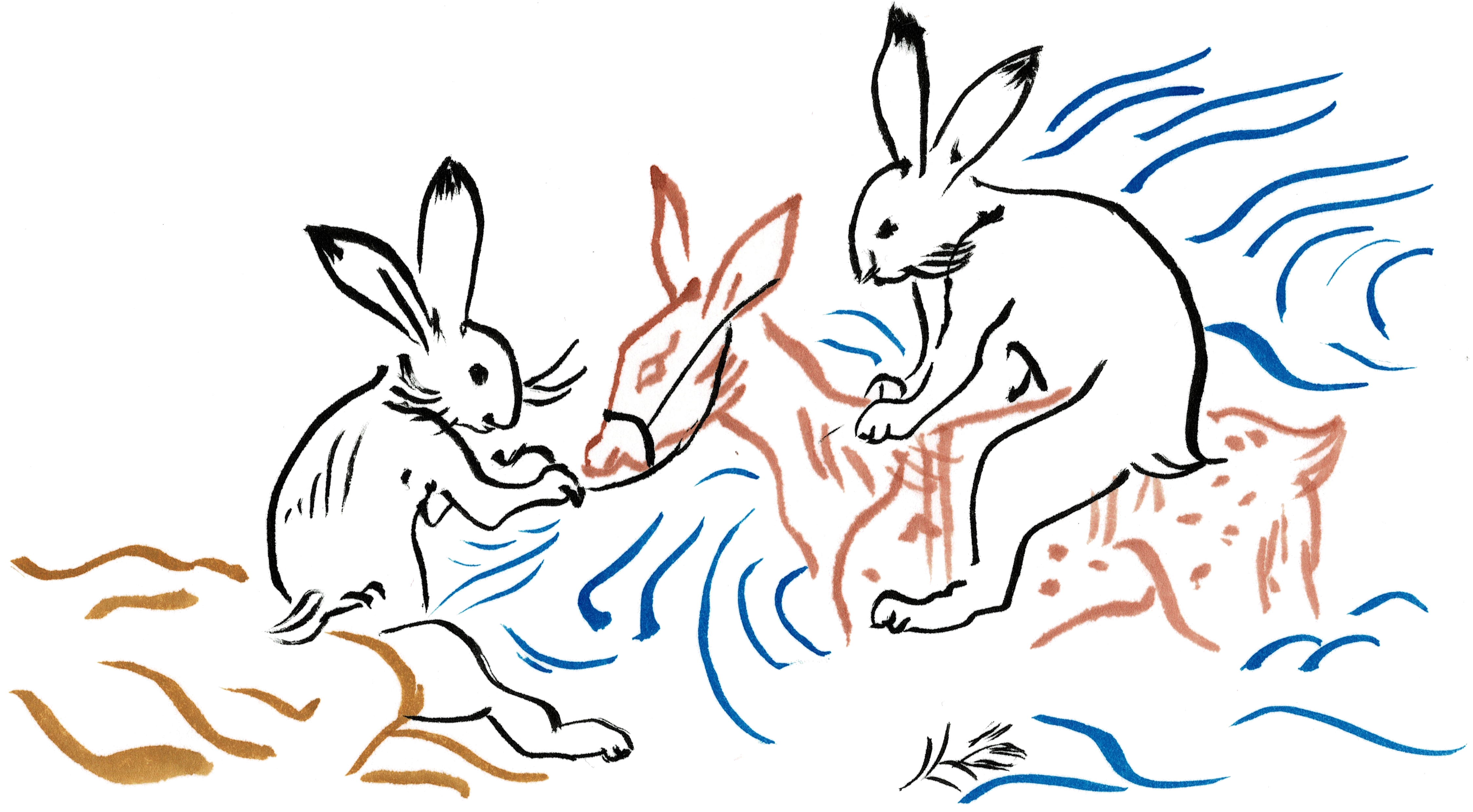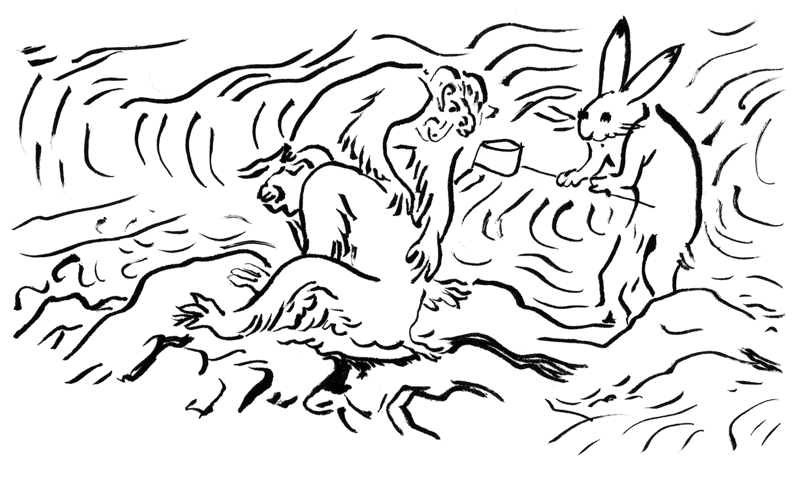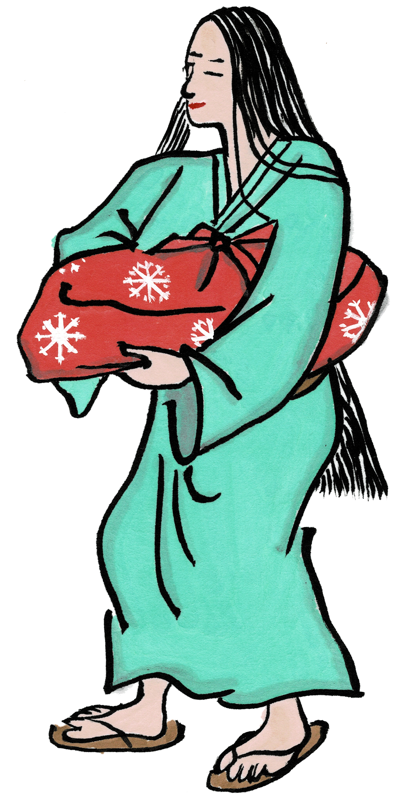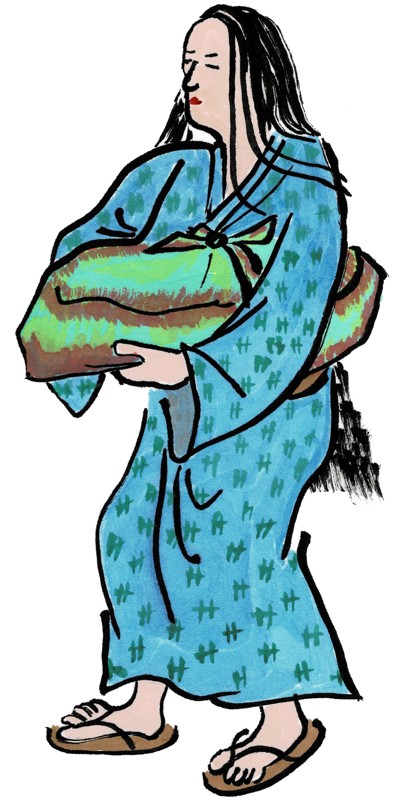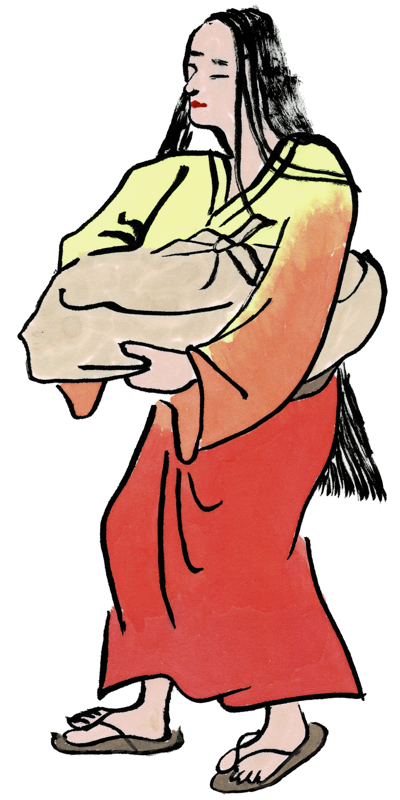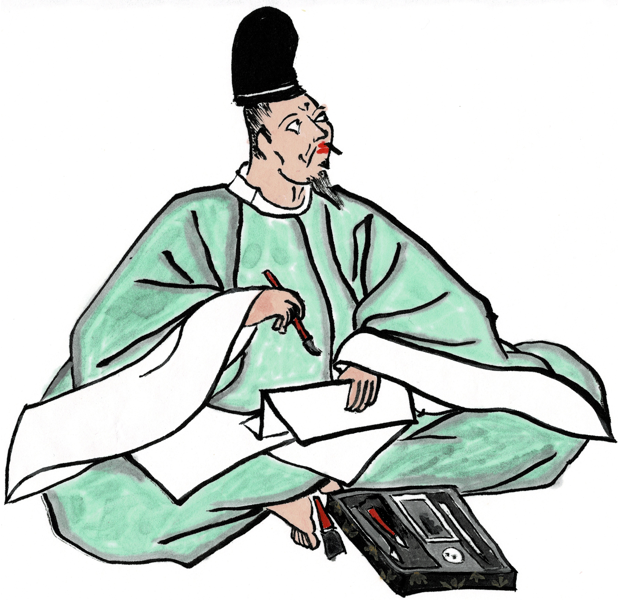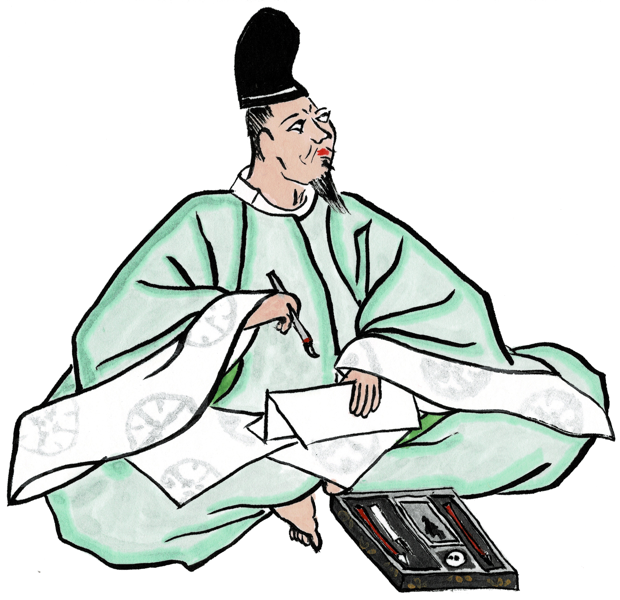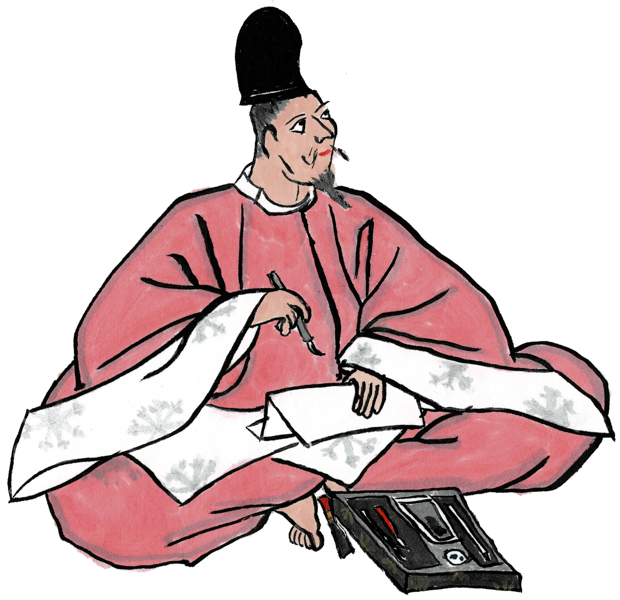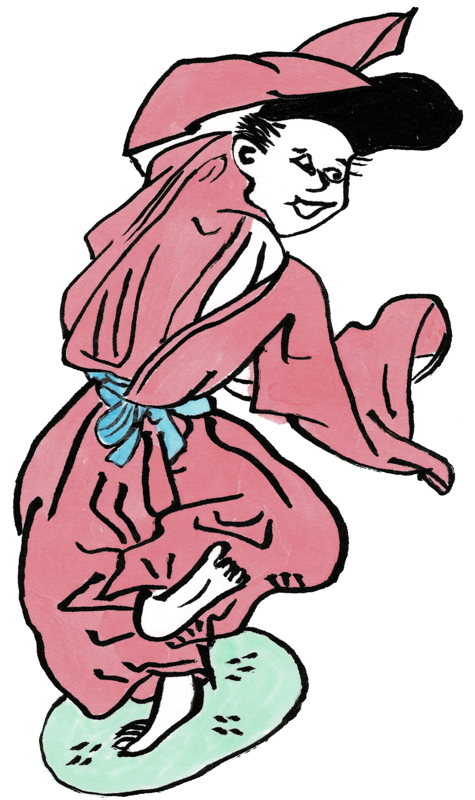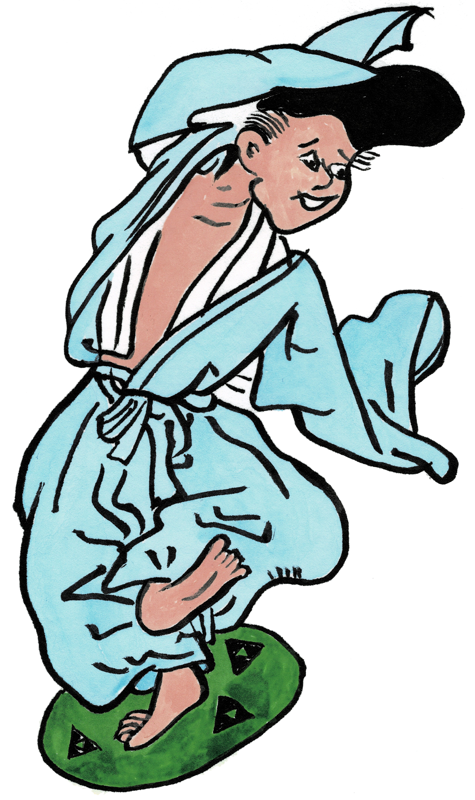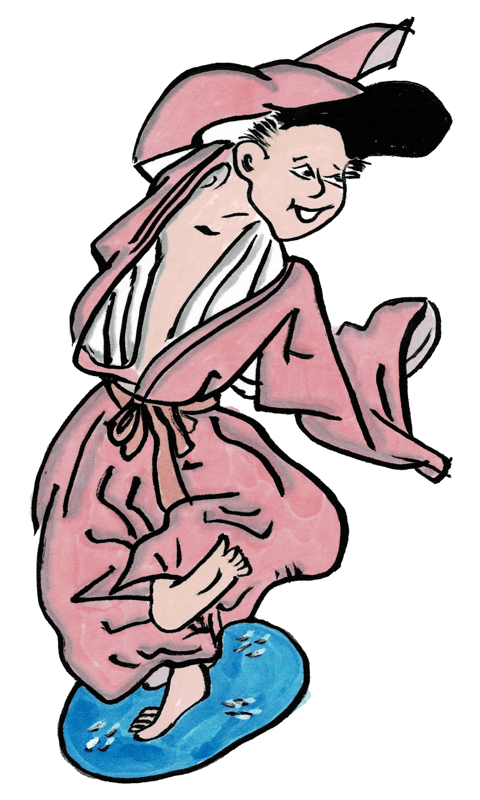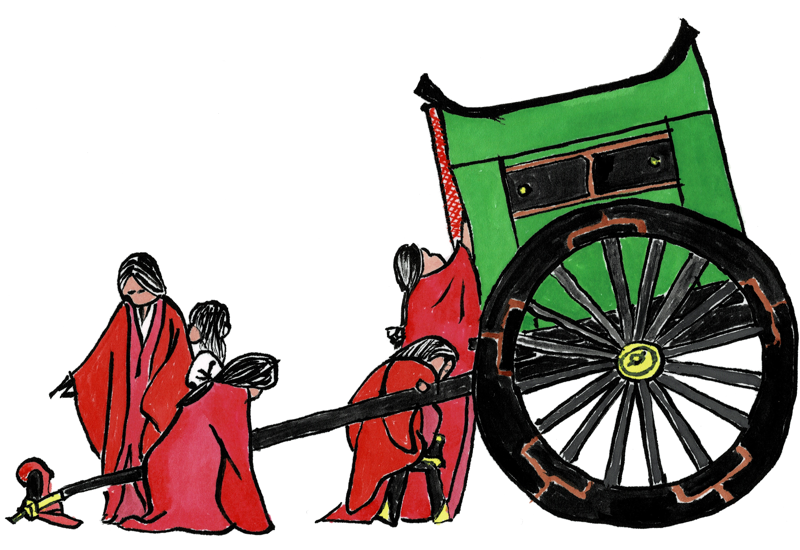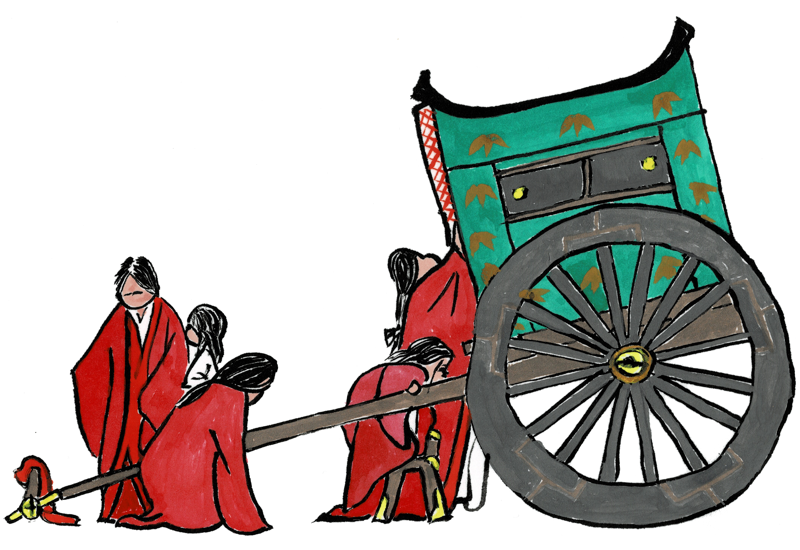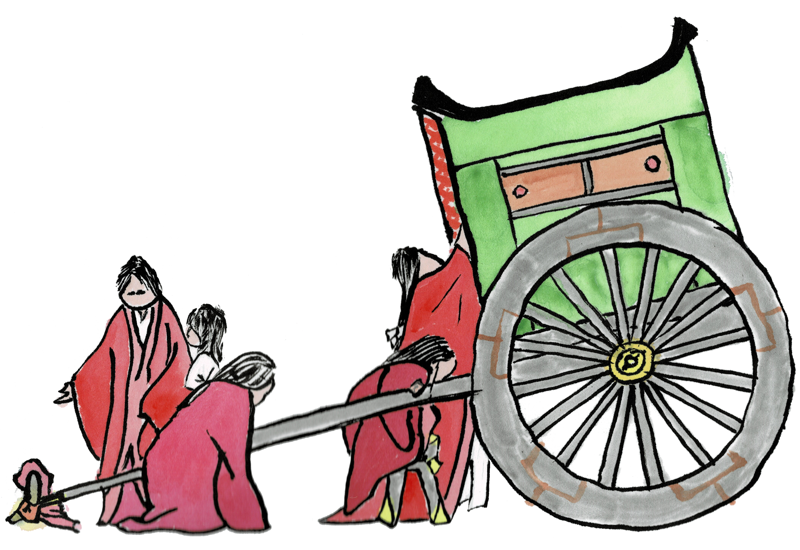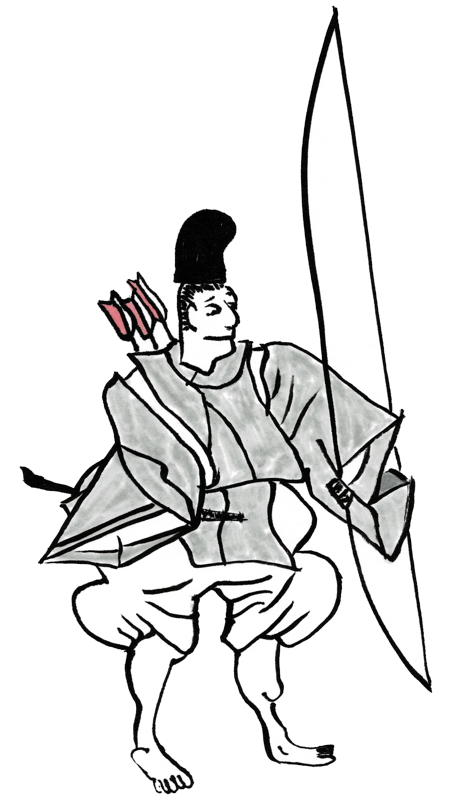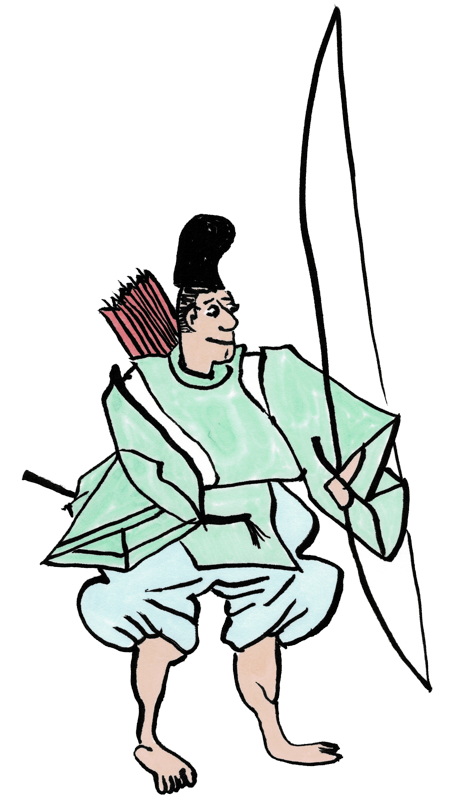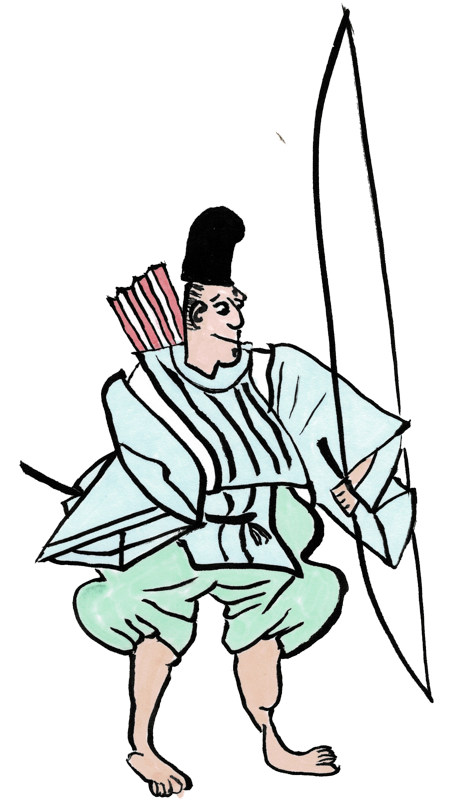This is the first of a pair of recent replications of images from the Nanajuichiban Shokunin Uta-awase emaki, a medieval Japanese scroll that depicts an imaginary poetry competition between artisans and artists of various types.
This emaki (illustrated scroll) depicts a poetry competition (uta-awase) among people of various occupations. The competition has 71 rounds, and 142 different kinds of craftspeople (shokunin) are depicted, each with their own poem. This image depicts a musician playing a stringed instrument called a “Biwa”, the strings are plucked with a fan-shaped plectrum. As he is depicted with a walking stick and geta sandals, he is most likely an itinerant musician.
You can see that I did a little bit of playing with color and composition, particularly the arrangement of the musician’s accoutrement. The first one is most true to the original scroll, but I like the way the green coloring came out on the second copy.





